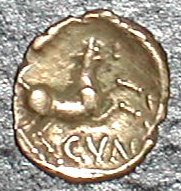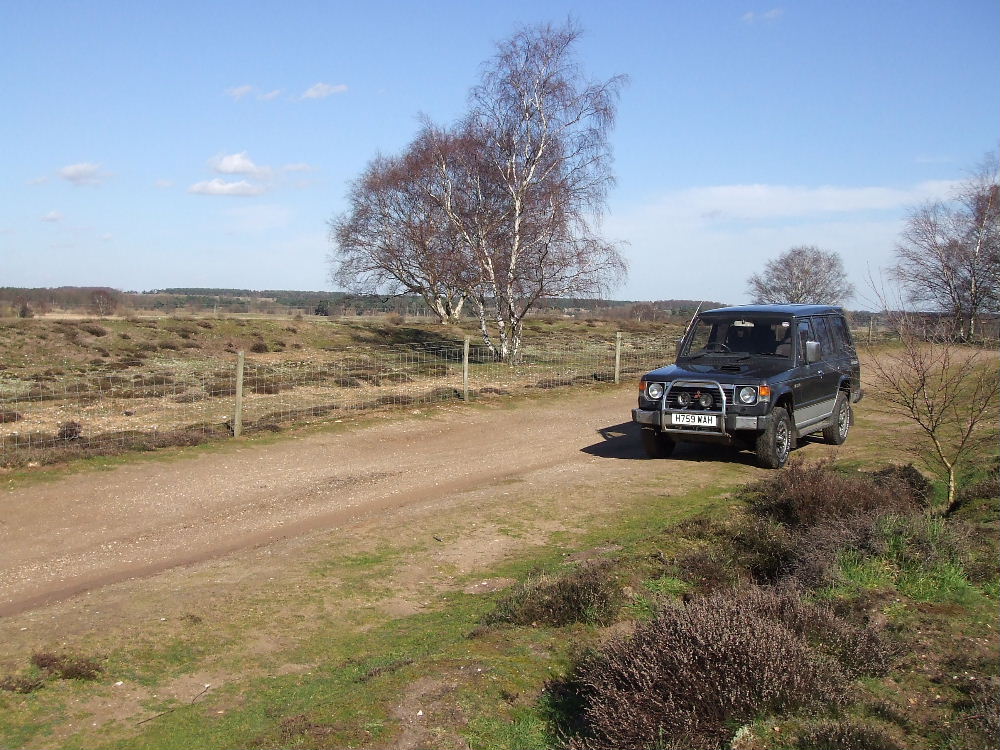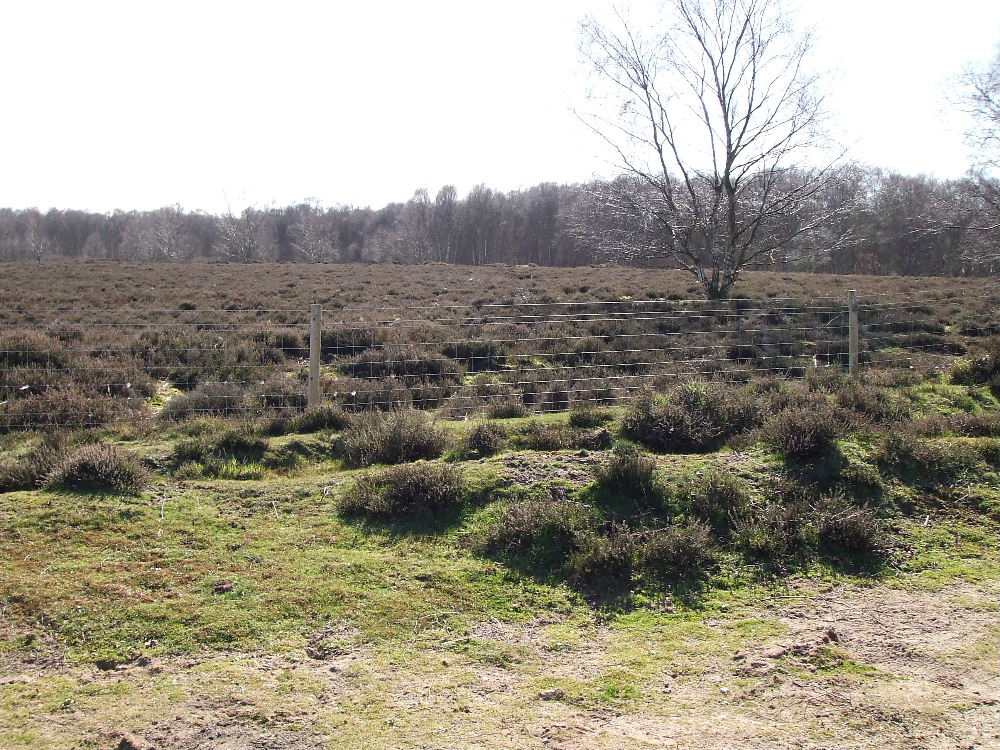 |
 |
SAND LIZARDS FOR EAST ANGLIA: |
| Author | Message |
|
AGILIS Senior Member Joined: 27 Feb 2007 No. of posts: 694  View other posts by AGILIS |
Posted: 10 Nov 2010 Has there ever been a program for establishing La.colonies in Suffolk or Norfolk as we have some great heathland sites with all the needs of sand lizards and Ca . like healthy swathes of heather on sandlings almost on a par with Southern heaths , some that are pretty barren when it comes to snakes and lizards I know as have looked at many heaths in the past. As the areas around Thetford and the east coast of Suffolk above Ipswich Like Tunstall forest To Dunwich etc they are ideal for habitat, or has there been some sort of negative replies from Nat England??Keith Has there ever been a program for establishing La.colonies in Suffolk or Norfolk as we have some great heathland sites with all the needs of sand lizards and Ca . like healthy swathes of heather on sandlings almost on a par with Southern heaths , some that are pretty barren when it comes to snakes and lizards I know as have looked at many heaths in the past. As the areas around Thetford and the east coast of Suffolk above Ipswich Like Tunstall forest To Dunwich etc they are ideal for habitat, or has there been some sort of negative replies from Nat England??Keith
TYPICAL EAST ANGLIA SANDY HEATHLAND PICS SHOWING TUNSTAL FOREST & CAVENHAM HEATH NEAR MILDENHAL SUFFOLK 
 LOCAL ICYNICAL CELTIC ECO WARRIOR AND FAILED DRUID |
|
flywaver Member Joined: 25 Nov 2010 No. of posts: 6 View other posts by flywaver |
Posted: 25 Nov 2010 I cant see why there cant be and add Smooth Snakes as well!
|
|
ben rigsby Senior Member Joined: 27 Apr 2010 No. of posts: 337 View other posts by ben rigsby |
Posted: 27 Nov 2010 hi keith 
looks good from what ive read. unlike you, i havent been around LA or CA. i only know the "common" herps. its disappointing you havent had much response on this - so far. given your obvious passion for the species and their survival. good luck in provoking some interest and getting something done tho! 
ben Diversity. |
|
AGILIS Senior Member Joined: 27 Feb 2007 No. of posts: 694  View other posts by AGILIS |
Posted: 27 Nov 2010 HI BEN YEP NOT MUCH RESPONSE AS YOU SAID ,As the areas in Suffolk are ideal for Sand lizards and smooth snakes but I suppose there has been some opposition from people in Nat England who would prefer our heaths populated by highland cattle and new forest ponies running amok with the odd eagle and buzzards being introduced for the benefit of sheep and free range chicken farmers .! LOCAL ICYNICAL CELTIC ECO WARRIOR AND FAILED DRUID |
|
SteveA Member Joined: 30 Aug 2007 No. of posts: 15 View other posts by SteveA |
Posted: 29 Nov 2010
Hello Chaps, yes rather a suprising lack of response. Having spent bit of time on both the Heaths and Sand Dunes of East Anglia I was rather mystified at the lack of La's and Ca's. But reading around the literature (and much paraphrasing); English Natures "Pilot Study for Sand Lizard Recovery Programme" 1994, has no historical records for either heaths or sand dunes Recognised historic distribution seems to follow the 6hrs/ day "bright sunshine" line (isohelos?!) linking southern and western Coasts (hence longevity of introduced population on Coll), Rather than temps. No suggestion of using vast network of habitat as possible introduction sites after detailed research structure of dunes not considered appropriate (marram dense frontal ridge) and exposure to cold easterly winds. Though nothing stated for rejection of heathlands. Steve. PS I thought some authors might be members of this forum?
|
|
Richard2 Member Joined: 01 Dec 2010 No. of posts: 17 View other posts by Richard2 |
Posted: 01 Dec 2010 This distribution map shows records in Suffolk and Norfolk (which surprised me). http://www.searchnbn.net/gridMap/gridMapLarge.
|
|
Richard2 Member Joined: 01 Dec 2010 No. of posts: 17 View other posts by Richard2 |
Posted: 01 Dec 2010 Sorry - that link doesn't work. One that does is here, message 4: |
|
SteveA Member Joined: 30 Aug 2007 No. of posts: 15 View other posts by SteveA |
Posted: 01 Dec 2010 Curiouser and curiouser.... Suffolk records are from 1960 and 1930's, Norfolk 1930's and Thetford Forest/ Brecks area 1930 and 1920's (If you select Interactive Map on that NBN link you will see that dataset to which records refer is held by ARC nee HCT) Funny they dont appear in many other publications. I know NBN can include odd stand alone records but these have all been allocated to ARC (unless someone has better access privilage then me) Though cross checking my "library" Shire Publications "Lizards of the British Isles" shows a record for Suffolk coast. But nothing in BeeBee and Griffiths. The "Sand Lizard Pilot Study" does include reference to other (sometimes single) historical accounts and variously rejects or supports on varying merit. But nothing for East Anglia. Obviously time to crank this up to a full blown cover up..... |
|
Richard2 Member Joined: 01 Dec 2010 No. of posts: 17 View other posts by Richard2 |
Posted: 01 Dec 2010 Is it that those records from the 30s and earlier are considered too unreliable? It would be interesting to know why. |
|
ben rigsby Senior Member Joined: 27 Apr 2010 No. of posts: 337 View other posts by ben rigsby |
Posted: 02 Dec 2010 [QUOTE=Richard2] Is it that those records from the 30s and earlier are considered too unreliable? It would be interesting to know why.[/QUOTE] yes it would. where theres smoke theres fire. any natural history writer or recorder worth their salt will want to be accurate. in any age. even anecdotal evidence is worth checking out if its possible. eg ive spoken with ageing farmers who remember adders on their land in their youth where now they are long gone. Peter Staffords "Lizards of the british isles" is a great little book. so is "the adder" by him. both were priced at only ú2.50 in 1997! it felt like i was buying the moon on a stick for a few coppers at the time 
ben Diversity. |
|
SteveA Member Joined: 30 Aug 2007 No. of posts: 15 View other posts by SteveA |
Posted: 05 Dec 2010 Ref were old records considered unreliable? It seems a bit variable, some rejected for lack of detail (plus use of terms like "green lizard" clouding the matter) some rejected for unsuitable habitat but mostly not made clear and some records accepted on what doesnt seem very suitable habitat (local to me in south Devon two heaths considered for '94 reintructions that seem a bit stoney). Though as I'm reading a book or a finished report rather than source data it perhaps not suprising that many details are missing. The real story is that a dearth of historical records is pretty usual for herptiles as yer olden days naturalist weren't interested in them and many accounts of species were dismissed by contempory experts 'cause those species wernt supposed to occur...thus we almost certainly lost species prior to our knowledge of their existence. Which does make it easy to imagine a population on East Anglian heaths lost before anyone recorded them. Thetford forest largely covers "the Brecks" a once huge tract of heath and naked shifting sands feared by all but the most intrepid there could well have suitable habitat on its fringes. Steve ps but just to keep stoking things up... Look at the JNCC website and search Sand Lizard, it mentions "recent re-introduction into Derbyshire"?! and shows an historical record map which includes all sorts of random locations (welsh borders, suffolk/norfolk coast again and possibly chileterns) |
|
AGILIS Senior Member Joined: 27 Feb 2007 No. of posts: 694  View other posts by AGILIS |
Posted: 08 Dec 2010 Hi folks the idea of getting good habitat for la & Hi folks the idea of getting good habitat for la &
ca is the main prob for their distribution,thats why I have suggested sites being used in Suffolk and Norfolk. Anyone who have visited any of these heathland sites would realise how ideal they are ,if you closed you eyes and opened them, you would think you were on a Surrey/Sussex or Hant/Dorset heathland and expect to see some. Also these heaths have an advantage of not so much human traffic as the southern heaths. hence, less disturbing of animals, also the advantage of being drier counties, and as far as climate goes hardly any difference in fact in summer I would think its warmer only the coast might be cooler if there is a north east wind. But getting back to the point and lets forget all the academic arguments of why and how graphs and charts, the idea is to spread a declining species around for its own retention in todays ever encroaching concreting of the English wild countryside. LOCAL ICYNICAL CELTIC ECO WARRIOR AND FAILED DRUID |
|
SteveA Member Joined: 30 Aug 2007 No. of posts: 15 View other posts by SteveA |
Posted: 08 Dec 2010 Er yes sorry did rather drift off topic into "tales of the unexplained" my fault, I'm a bit over interested in funny inconsistancies in historical natural history. Anyway to return to your point, I couldnt agree more that in the face of declining habitat availability we should consider all potential sites. However I doubt "the authorities" would consider introductions of La into areas with no history of occurence, from an ecological stand point they would be in effect aliens (doesnt WCA include phrase along lines "..an area in which they are not normally resident"?). S |
|
AGILIS Senior Member Joined: 27 Feb 2007 No. of posts: 694  View other posts by AGILIS |
Posted: 09 Dec 2010 Hi Steve yes I am sure that Nat England admimcrats would object from their tax payers sponsored office chairs waving their Phds at us using all sorts of excuses , But they do not mind highland cattle & new forest ponies and other non native residents animals being introduced in to trample the area, I have even heard a whisper on the grape vine that some twit wants to see wolves & wild boar bears etc reintroduced. LOCAL ICYNICAL CELTIC ECO WARRIOR AND FAILED DRUID |
|
Richard2 Member Joined: 01 Dec 2010 No. of posts: 17 View other posts by Richard2 |
Posted: 09 Dec 2010 The reintroduction of wolves is probably impracticable, but I like the vision. Wild boar have reintroduced themselves; what's wrong with that? Great, I say. I don't see the conflict between these animals and reptiles. But, getting back to East Anglia and Sand Lizards, we should know more about those records and whether they could constitute evidence of previous populations, enough to justify reintroduction. We should also think about why those populations, if they did exist, died out. The habitat seems relatively undamaged, from what earlier posters have said. Could it be that these populations were always marginal and vulnerable because of colder summer temperatures (those east winds from the coast)? If (re)introduction were ever considered, that possibility would have to be studied first.
|
|
ben rigsby Senior Member Joined: 27 Apr 2010 No. of posts: 337 View other posts by ben rigsby |
Posted: 10 Dec 2010 finding an LA bone would do the trick keith. it worked for chris gleed-owens pool frogs.  fat chance of you chancing upon one though eh? fat chance of you chancing upon one though eh? 
with LA/its habitat likely to continue decling owing to human population growth/longevity/greens n walls?! etc then personally i would have thought it worth considering other sites at least. if deemed suitable. historical evidence or not. lowland heath is a rare type of habitat after all and towns like Bournemouth and Poole are not going to shrink are they? for sand lizards, the clock is ticking.. i hope your post has been read by the phd-wavers you spoke of. it ought to be. 
ben NB we have "wild boar" here in GLOS. like any pig they make a lot of mess with their constant digging. i wouldnt have thought that beneficial to heathland reptiles. as i understood it, they arent true wild boar either but descendants of farm-bred "near boar" so not native? Diversity. |
|
AGILIS Senior Member Joined: 27 Feb 2007 No. of posts: 694  View other posts by AGILIS |
Posted: 11 Dec 2010 Hi Ben you hit it on the nail towns like Bournmouth and Poole have almost wiped out the existing heaths that just about survived up to the 1950s big build every where policy I remember as a teenager places like sleepy Hurn that now is engulfed by aviation Canford heath thats had great swathes turned into a council dump St Catherines hill being one example of house that surround it on Fairmile Rd were built on top of many la vb ca lv habitat , you used to even see La basking in the frontgardens along the main road alas no more and its goingto get worse, so I cant see why there is a delay in realocation by some Nat England bureaucrats. LOCAL ICYNICAL CELTIC ECO WARRIOR AND FAILED DRUID |
|
Caleb Forum Coordinator Joined: 17 Feb 2003 No. of posts: 448 View other posts by Caleb |
Posted: 11 Dec 2010 [QUOTE=ben rigsby] finding an LA bone would do the trick keith. it worked for chris gleed-owens pool frogs. [/QUOTE] It was quite a lot of bones... and there was also a preserved pool frog in Norwich City Museum that had been collected locally in the 1850s. Lee Brady (who posts here occasionally) wrote a great piece on validating the Kent sand lizard records: Historical sand lizard records There are some quite bizarre sand lizard records on the ARC database- loads from central Coventry, one on the 1st of January. Surely must be either someone's captive colony or a quite spectacular misidentification. |
|
ben rigsby Senior Member Joined: 27 Apr 2010 No. of posts: 337 View other posts by ben rigsby |
Posted: 11 Dec 2010 thanks (as ever) for the info/links caleb. interesting and enjoyable stuff. tho' it prompts as many new questions as it answers! positively identified or not, any (AF excepted) lizard sighting in central Coventry surely worthy of note? if multiple recordings as you state, then theres got to be something in it dont you think? even if its just vivs, any lacerta prescence is quite remarkable for a UK city. life was much simpler then. its not impossible. thanks, ben Diversity. |
|
Richard2 Member Joined: 01 Dec 2010 No. of posts: 17 View other posts by Richard2 |
Posted: 11 Dec 2010 The wild boar do indeed root up the ground, but I know of no evidence that this has ever had a damaging effect on reptile populations. Heathland isn't boar habitat anyway - not enough cover and not enough nourishing roots. Why are we in favour of reintroductions, anyway, and why shouldn't we introduce creatures to places where they haven't been recorded before? Are we attempting to restore the ecosystem to some previous condition? In your view, Ben, the new wild boar aren't authentic because they aren't pure-bred, and therefore they shouldn't be here. Am I understanding you right? But ecosystems aren't stable even when left alone by humans; they are constantly evolving and changing, due to all sorts of internal and external factors. An attempt to restore wildlife that was once in a particular place is an attempt to freeze the ecological process at a particular moment. There is no ecological principle that justifies this. What we are doing with such introductions is trying to create an ecosystem that gives us pleasure. That's why we like the idea of introducing Sand Lizards in East Anglia, and that's why I like the new wild boar. I don't think we should hide this motive behind notions of ecological authenticity. |
- SAND LIZARDS FOR EAST ANGLIA |